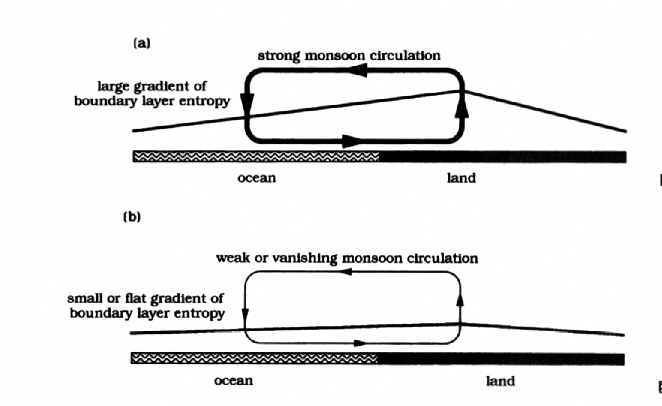Deforestation, Desertification, and the Drought in West Africa
The region of West Africa has experienced significant changes in land cover during this century, ranging from deforestation near the Atlantic coast to desertification near the border with the Sahara desert.
Satellite image of vegetation types in AfricaThe same region has been experiencing a significant drought during the last few decades, with below normal levels of rainfall observed almost everywhere within West Africa. This drought has been associated with weakening of the monsoon circulation.
Ranifall Fluctuations in West Africa (1901-1990), expressed as
regionally averaged standardized departures, Nicholson (1993)Eltahir and Gong (1996) proposed a general framework for describing the role of biosphere-atmosphere-ocean interactions. It emphasizes the role of the gradient in boundary layer moist static energy (entropy) between ocean and land in modulating the dynamics of the monsoon.
A schematic of the proposed land-atmosphere-ocean interaction in
West Africa.Zheng and Eltahir (1997) studied the response of the monsoon system to deforestation and desertification using a simple model. The results suggest that the potential impact of human induced change of land cover on regional climate depends critically on the location of the change in vegetation cover. That is, desertification along the border withthe Sahara (e.g., in Chad, Niger, Mali and Mauritania) leaves a relatively minor impact on monsoon circulation and regional rainfall; deforestation along the southern coast of West Africa (e.g., in Nigeria, Ghana and Ivory Coast) may result in complete collapse of monsoon circulation, and a significant reduction of regional rainfall.
The meridional distribution of (a) total rainfall in mm/day, for
the control (solid line), desertifcation (dashed line), and deforestation
(dotted line); (b) same as (a) but for large-scale moisture convergence.Back to Highlights of Research



